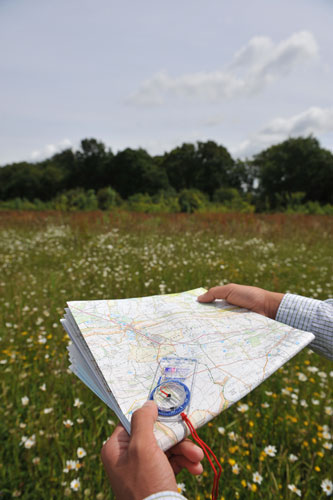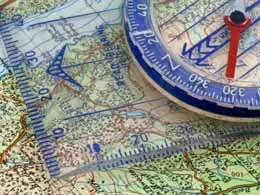Compasses now pointing East of North, OS reports.

Given the often glacial pace of geologic and geographic change, today’s notice from the Ordnance Survey came as a bit of a surprise. For the first time in the organisation’s 223 year existence, Magnetic North has shifted from west of True North to east of it. The degree of difference between True and Magnetic North varies with location.
The difference is small, but when the GPS batteries die it will be worth remembering. A new icon illustrating the calculated difference between Magnetic, Grid, and True North will be added to all custom maps centred west of Penzance. For more information (and a quick compass refresher), visit this Ordnance Survey Blog post:
Magnetic North is on the move
One thing that many people don’t realise when they’re new to outdoor walking and navigation is that their compass doesn’t point to grid north – except by coincidence in some areas. The compass needle is attracted by magnetic force, which varies in different parts of the world and is constantly changing.
The magnetic variation throughout Great Britain has been a few degrees West of grid North with the amount of variation changing every year. For years the number has decreased, and now in the far South West of Britain, the North on your compass lies to the East of the North on your map for the first time since before the Ordnance Survey came into existence in 1791. The change is slowly crossing the country, and to mark this change Ordnance Survey has introduced a new icon to show the relationship between the three Norths (magnetic, grid and true). For now the new icon will only appear on Ordnance Survey Custom Made maps with a centre point to the West of Penzance. Custom Made maps allow customers to create bespoke maps centred on a location of their choice, for example home, favourite pub or school. We show magnetic north on all of our maps (and state the date it was calculated), but for now only Custom Made maps will be showing the latest figures, which we obtain from the British Geological Society (BGS) each year.
